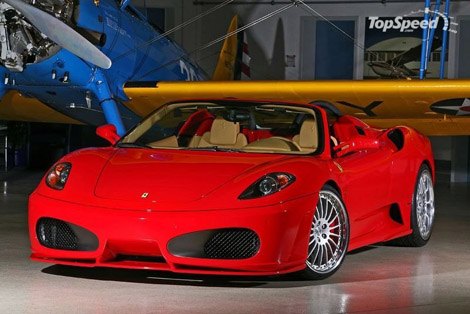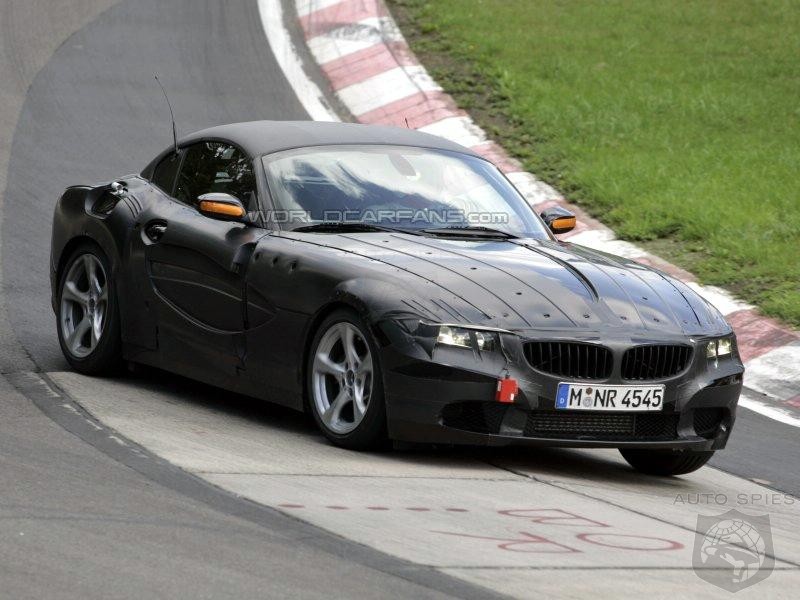Classic proportions, contemporary engineeringThis latest Z4 is appreciably longer (147mm), a touch wider (10mm) and negligibly lower (7mm) than the car it replaces. Big news though, is the way it engages the elements…
For the first time in BMW’s history, a roadster with the blue and white roundel has a folding metal roof, enabling the new Z4 to effectively replace two cars simultaneously, soft top and Coupe Z4.
Cabriolet romantics will chafe at this design change, telling all and sundry how few things are as endearing as driving in the rain with a canvas roof in place - muted water-drop-on-canvas acoustics filling the cabin.
I am quite happy to settle for the folding hard-top’s contemporary nature, especially considering its lower levels of noise at high speeds.
 Looks good, even with the roof in place. Could do with a more distinguished rear treatment though.
Looks good, even with the roof in place. Could do with a more distinguished rear treatment though.As an object of design the new Z4 might break with Z-series tradition in terms of roof structure, yet it cues classic two-thirds bonnet, one-third cabin and rump roadster proportions.
With an additional 147mm bumper-to-bumper, the new Z4 renders a car frighteningly close to the original 507 in profile.
Around the rear, I prefer the previous Z4’s dual crescent light treatment, yet the new design’s smoother horizontal bonnet lines are undoubtedly elegant. Along the flanks, the first-generation Z4’s heavily sculpted lower accent line is now balanced by a subtle shoulder line contour.
The elongated bonnet is embellished with two central creases which form a V-shape and the BMW roundel has migrated from the bonnet to the bumper.
Overall, it’s a strikingly styled car with a discerning touch of elegance, which is hardly surprising seeing as a woman’s intuition surfaced the exterior – Juliane Blasi’s work is highly commended.
Retract the electro-hydraulic roof and the cabin architecture reveals a familiar BMW blend.
 Subtle touches, like those four nautically themed ventilation controls, contribute to make Z4 the best BMW cabin around currently.
Subtle touches, like those four nautically themed ventilation controls, contribute to make Z4 the best BMW cabin around currently. Ergonomics are perfect, with a decidedly driver oriented placement of switches, stalks and controls.
From a design perspective, it’s hardly mould breaking yet the new ventilation controls and door trim do their bit to invigorate and distinguish Z4’s cabin from the current fare of underwhelming BMW interior design.
The road- and engine speed dials appear to have come straight off a 1990s 3 Series, bar them being mounted in recessed bezels, yet BMW’s curiously legible fonts and orange backlighting are still strikingly accomplished, even in 2009.
Equipment levels are pretty comprehensive too, with a sunroof (obviously) the only thing missing from the spec sheet.
BMW’s second generation iDrive system is as intuitive as its predecessor was petulant and Z4’s SatNav is wonderfully discerning, pandering to even my substandard sense of direction with insightful menu shortcuts with split-screen options.
 Build quality, er, we believe the word is vacillating...
Build quality, er, we believe the word is vacillating...Z4’s roadster configuration ensures the absence of silly pseudo rear-seats and its bootspace is all the better for it, a neat 310l in Coupe trim, 180l with the roof retracted.
Admittedly, if you simply must find space for an additional manbag with the roof down, Merc’s SLK bests Z4’s bootspace by 28l, yet is 10l shy in capacity with the roof deployed.
The last of a breed?There is little argument Juliane Blasi's Z4 proportions are classic roadster, especially the elongated bonnet.
What nestles just above the front axle though, is what makes this latest Z4 such an alluring prospect - the last mass produced in-line six-cylinder engine around driving an aft axle differential.
Despite other manufacturers pandering to packaging considerations and opting for V-configurations, BMW has stubbornly retained its fabled in-line layout for six-cylinder engines – a mechanical symmetry unmatched for smoothness and acoustic appeal.
Our Z4 test car, being an sDrive35i model, was powered by BMW’s award winning 3l, twin-turbo straight-six, which is quite simply the best production engine in the world. No argument. Frugal, powerful, resonant, it’s all things to all purposes all of the time.
Matched to BMW’s new seven-speed dual-clutch transmission (a R28 700 option), the drivetrain makes for a heady dynamic blend.
Although the DCT ‘box (assembled by Getrag, utilising BorgWarner’s dualtronic clutch system) is a mellowed version of the M3 unit (foregoing launch control), it suits the Z4 application to a tee.
Some dislike its Steptronic layout - symmetrical pull for upshifts and push for downshifts - preferring the tradisional right-paddle pull for upshifts and left-paddle pull for downshifts 'F1' set-up....
 19-inch alloy wheels are simple in design (and to clean) yet achingly pretty. Runflat tyres appear to be filled with concrete instead of air though...All things considered, a R13 400 option you can do without.
19-inch alloy wheels are simple in design (and to clean) yet achingly pretty. Runflat tyres appear to be filled with concrete instead of air though...All things considered, a R13 400 option you can do without.Purists might lament the 3l turbo engine’s undersquare architecture, resulting in power peaking at a rather sedate engine speed of only 5 800r/min, yet with 400Nm of rotational force available at only 1 300r/min, you’re left with an immensely generous range of exploitable performance.
The DCT transmission’s seven ratios tally consumption between 11- and 12l/100km in daily driving (very reasonable considering the performance) and ensure gloriously impolite sound effects when downshifting before entering traffic circles or leaving your apartment block's car park in the morning.
From a pure throttle-position-to-thrill ratio, the Z4 35i should have the measure of its peers, yet there is one factor mitigating against it – mass.
There is no diplomatic way of saying this – BMW’s Z4, thanks to its 120kg folding roof, is an overweight car. Pretty perhaps, but fat none the less. Merc’s SLK 350, at 1 485kg, appears positively dainty compared to the Z4’s 1 580kg kerb weight.
Around topographically undulating byways, favoured by roadsters on Sunday morning breakfast runs, the Z4 remains curiously engaging though, despite its weight problem.
It might have electric power steering, yet the three dynamic maps (normal, sport and sport+) allow one to shore up an unusual level of linearly geared accuracy and counterweight via the helm.
 With only one differential (at the rear) and 225kW generated above the front axle, tyre signatures can be left at will. ABS actuated rear diff-locking function curtails the sliding fun at speed with the ESP partly disengaged though.
With only one differential (at the rear) and 225kW generated above the front axle, tyre signatures can be left at will. ABS actuated rear diff-locking function curtails the sliding fun at speed with the ESP partly disengaged though.Grip is monumental (as you’d expect with such a low centre of gravity and generous rubber at each wheel corner) and mid-corner surface imperfections are unable to unsettle the Z4 when decelerated, set-up dexterously and turned in.
Ride quality though, especially at low speeds, is truly dreadful - thanks to those runflat Bridgestones and their unyielding sidewalls. It’s not as nimble as previous Z series roadsters either, yet outright cornering limits are way beyond what most customers will be brazen enough to explore with the roof down - on public roads anyhow.
When you do get a bit silly, and it’s quite easy to get carried away with the effortless velocity courtesy of the 35i’s blown six, failsafe understeer has been engineered into the package.
You can hang out the tail at low speeds with brutal throttle abuse, yet this is hardly what the Z4 was designed for.
Its rear wheel drive configuration is more biased towards disciplined turn-in characteristics, with the front wheels expertly managing directional changes, unburdened by power delivery duties.
For ultimate handling dexterity a Porsche Boxster remains the better car though.
 Looks simply epic, with the enlarged kidneys perfectly balanced against the additional second-generation Z4 sheetmetal. Design
Looks simply epic, with the enlarged kidneys perfectly balanced against the additional second-generation Z4 sheetmetal. DesignClassic roadster styling finally does justice to 507 heritage. Tin-top effortless in operation at 20 seconds and detailing should stand the test of time.
Interior Beyond the absolutely useless sun-visors (they're too small and don't clip out sideways, guaranteeing agony for 20 minutes after sunrise and 20 minutes before sunset driving at a right angle to the sun), it's an ergonomic joy and easier on the eye than any of its siblings.
Despite the fold-out door-pockets it could do with more interior stowage space though. No sunglass holder either. Driving position is ace though.
Driving World’s best engine, shifting through a superb DCT gearbox – really is like having your cake and eating it. Commendably stable at speed, probingly capable of surgical changes of direction on sweeping roads. Brakes feel the weight when pushing on though.
VerdictOne of the differences between serendipity and irony is the former’s chancing of fate being met with unintentionally fortuitous consequences. BMW gambled by adding a metal-roof to their latest Z series car.
This gamble has paid dividends, heralding a roadster which finally has the styling proportions and presence to do justice to the 507 heritage.
Expensive it may be, but it’s the most accomplished of the modern Z series cars.
Just make sure you order one without those 19-inch runflats.
PlusesJust look at it
Tin-top practicality
Twin-turbo six/seven-speed DCT combination
MinusesNot cheap
Range limiting 55l tank
A bit heavy
Horrendous ride quality with optional 19-inch wheels


 It is rare that the appearance of a car isn’t diminished by the addition of a retractable hardtop roof. The storage requirements for all that metal and machinery usually dictate a wider and higher rear end than is esthetically desirable. Check out the Chrysler Sebring convertible for an especially egregious example.
It is rare that the appearance of a car isn’t diminished by the addition of a retractable hardtop roof. The storage requirements for all that metal and machinery usually dictate a wider and higher rear end than is esthetically desirable. Check out the Chrysler Sebring convertible for an especially egregious example.













![[tesla roadster]](http://s.wsj.net/public/resources/images/OB-EB162_tesla__F_20090713144829.jpg)


 More speculation about the successor to the Bugatti Veyron has hit the web -- this time in the form of a rendering of the Bugatti Royale (also called the Bordeaux). Obviously, no one will know if this is an accurate representation until it's revealed to a select group of individuals at the Frankfurt Motor Show in September. However, given what we've seen in the teasers and what we know of the upcoming model, most of us think this is in the ballpark. In the meantime, if you'd like to read about a real Bugatti, check
More speculation about the successor to the Bugatti Veyron has hit the web -- this time in the form of a rendering of the Bugatti Royale (also called the Bordeaux). Obviously, no one will know if this is an accurate representation until it's revealed to a select group of individuals at the Frankfurt Motor Show in September. However, given what we've seen in the teasers and what we know of the upcoming model, most of us think this is in the ballpark. In the meantime, if you'd like to read about a real Bugatti, check






